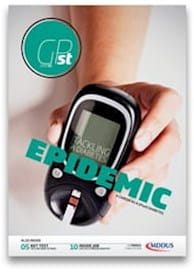A DOCTOR working late in a GP surgery struggles through a large number of repeat prescription requests. He comes across one for a 68-year-old man under treatment for osteoarthritis for more than six years. The patient suffers from pain in his back and legs and has been prescribed 10mg morphine sulphate tablets (MST) – two pills to be taken twice daily.
In copying the details by hand from a printed repeat request to a prescription form the GP mistakenly adds a zero to the dosage – making it 100mg MST. The patient fills the prescription at the pharmacy and takes two tablets before going to bed. He wakes up during the night feeling unwell and is violently sick the next morning. His wife calls for an ambulance but he is pronounced dead in his home a short time later.
THIS scenario is based on an actual case in the MDDUS files and highlights how a simple error can sometimes lead to tragic consequences. Of course most prescribing errors do not end in the patient’s death but that’s not to say they aren’t common and sometimes serious.
A recent study commissioned by the General Medical Council (GMC) looked in detail at prescribing errors among GPs. Fifteen general practices with diverse characteristics from three primary care trusts were examined with a two per cent random sample of patient records in each practice. This amounted to 1,777 individual patient records and the examination of 6,048 unique prescription items.
The researchers found that as many as one in 20 prescriptions written by GPs contains an error. In England alone, with 900 million items prescribed each year, that amounts to 45 million errors. Most errors were classed as mild or moderate, but around one in every 550 prescription items was judged to contain a serious error – equating to 1.6 million prescription items per year across England.
Looking at the statistics on a per patient basis the researchers concluded that more than one in eight patients put on medication after seeing their GP are given a prescription containing an error. The risk of prescribing errors increases according to patient age with children and over-75s twice as likely to have an error. The number of medicines taken also is a factor – each additional medicine increased error risk by 16 per cent.
Among the most common types of prescribing errors were incomplete information on the prescription, dose/strength errors and incorrect timing of doses. Among errors in monitoring prescribed medications, such as for patients taking the anticoagulant warfarin, the most common type was a “failure to request monitoring”.
A number of contributing factors were identified including deficiencies in GP prescribing training, pressure and distractions at work, lack of robust systems for ensuring patients receive necessary blood tests and problems relating to GPs using computer systems, including the overriding of important drug interaction alerts.
Many of the GPs consulted in focus groups for the GMC study felt that undergraduate therapeutic training was insufficiently taught at university and that the “jump” from being a GP trainee to a salaried GP was too high in terms of hands-on experience.
Poor communication combined with the quasi-autonomous role of practice nurses was also considered to be a key factor in prescribing errors, as were high workload, time pressures and the associated stress for practice staff. The failure of appointment systems to cope with patient demand was perceived as a particular source of stress. Distractions and interruptions were common for some GPs and thought to be an important cause of error.
Professor Tony Avery of the University of Nottingham’s medical school, who led the research, said: “Few prescriptions were associated with significant risks to patients but it’s important that we do everything we can to avoid all errors... Prescribing is a skill, and it is one that all doctors should take time to develop and keep up-to-date.”
The report offers a number of practice and personal prescriber strategies to reduce errors and is worth reading. It encourages all GPs to:
• Read aloud printed prescriptions to help ensure patient understanding and to allow the prescriber to check the accuracy of the prescription.
• Clarify prescribing recommendations made by specialists where these go beyond the GP’s comfort zone.
• Review newly prescribed medicines within six weeks.
• Add medicines to the repeat list only when patients are stable on them.
• Confirm important information with patients even when they are well known to the prescriber.
• Ensure that prescribers are competent to use all of the important features of e-prescribing and other IT-support systems.
Professor Sir Peter Rubin, Chair of the General Medical Council, said: “GPs are typically very busy, so we have to ensure they can give prescribing the priority it needs. Using effective computer systems to ensure potential errors are flagged and patients are monitored correctly is a very important way to minimise errors. Doctors and patients could also benefit from greater involvement from pharmacists in supporting prescribing and monitoring.”
Consult the GMC report here
Jim Killgore is an associate editor at MDDUS
This page was correct at the time of publication. Any guidance is intended as general guidance for members only. If you are a member and need specific advice relating to your own circumstances, please contact one of our advisers.
Read more from this issue of Insight Primary

Save this article
Save this article to a list of favourite articles which members can access in their account.
Save to library


